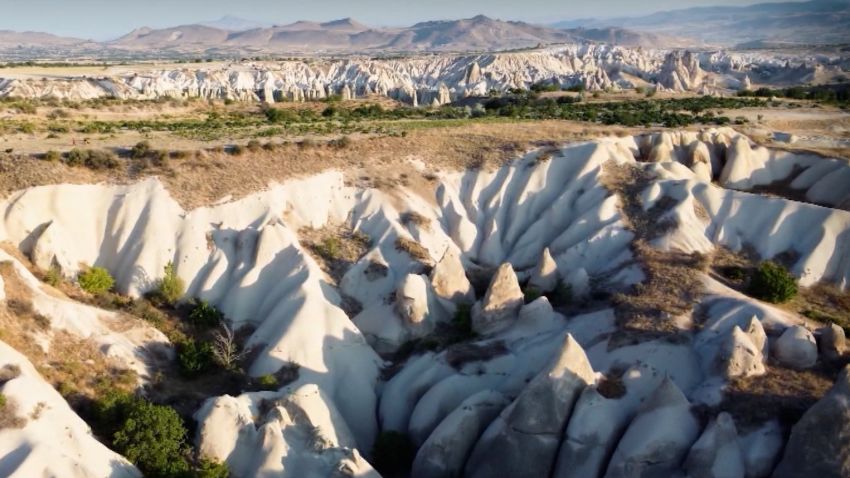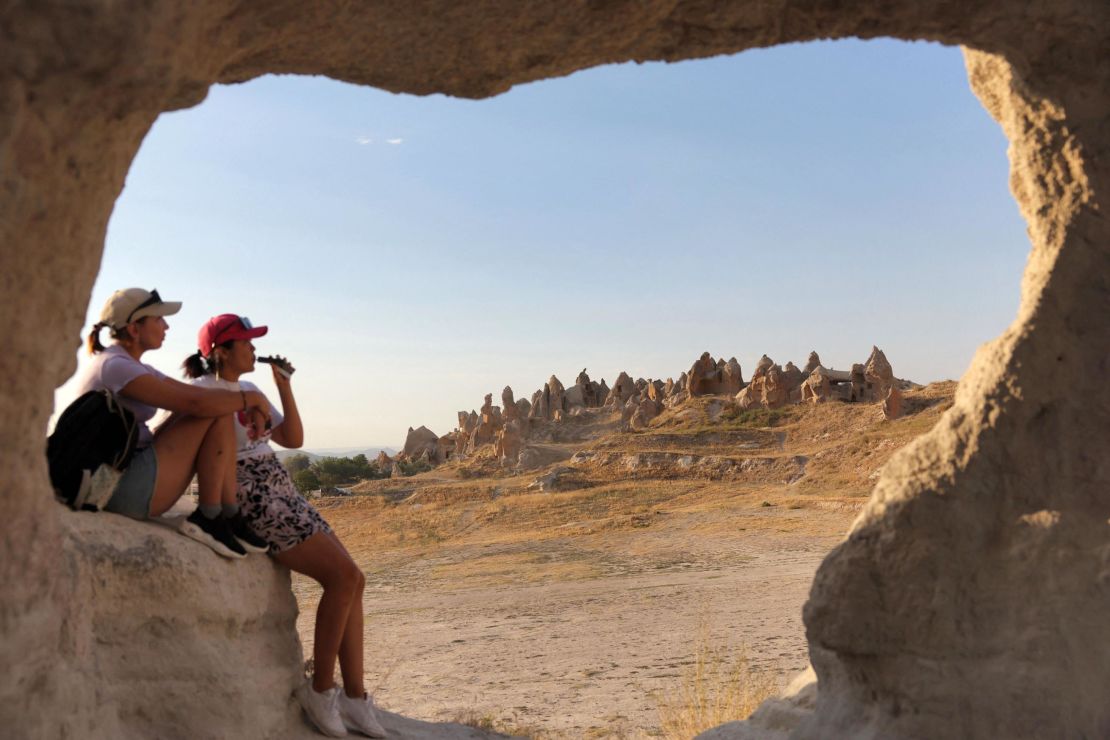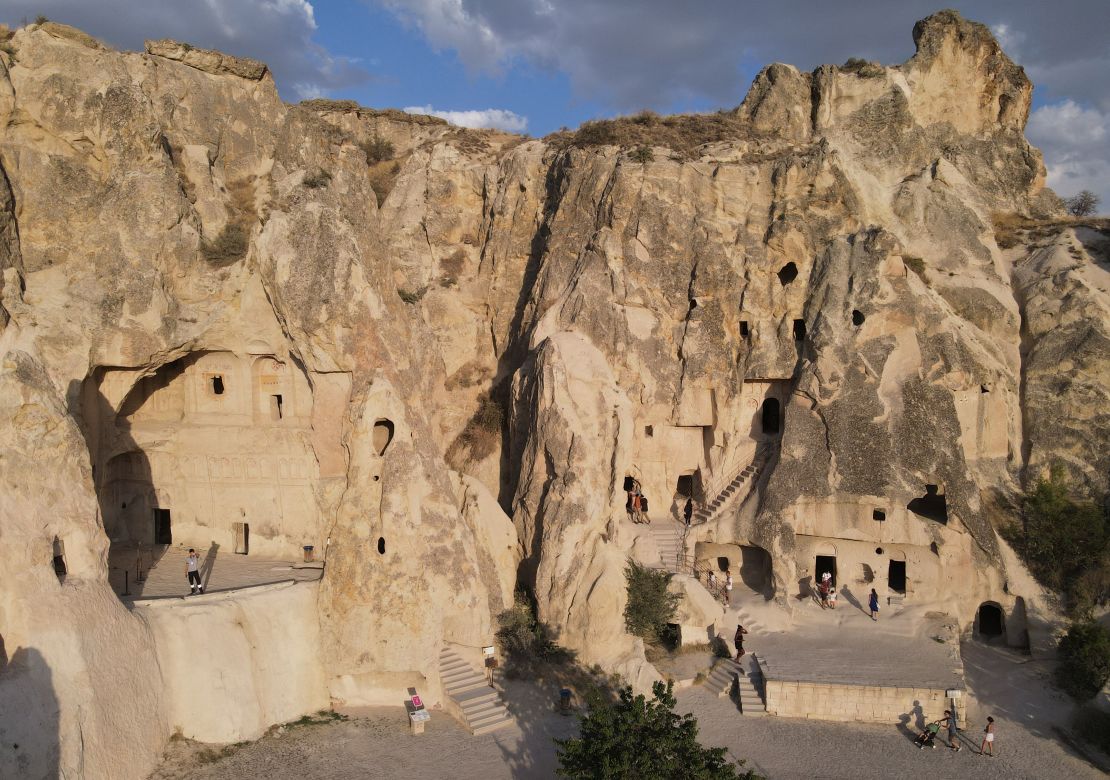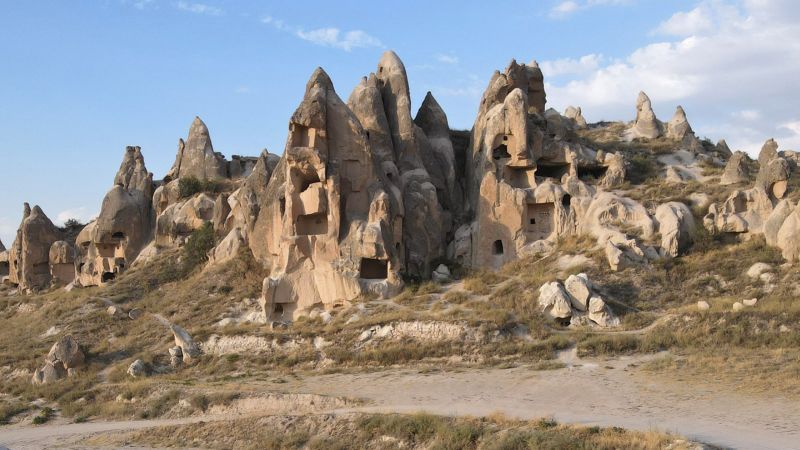cnn
—
A rich palette of bright swirls of caramel, ochres, creams and pinks unfurls across the landscape like an enormous hand-woven rug. Stands of poplar trees line paths carved by ancient lava flows from three now-extinct volcanoes, crossing valleys dotted with conical peribacos.
This is Cappadocia, in central Turkey, famous for its whimsical “fairy chimneys,” to give peribacı its English name.
In Cappadocia they abound, as well as cave churches and monasteries. The region is dotted with ancient farming communities with stone-carved dwellings and outbuildings, where ordinary people lived alongside monks.
When the volcanic ash cooled, it left behind a soft, porous rock called tuff. Over thousands of years, the tuff was eroded and shaped by water and wind.
It is easy to carve but hardens when exposed to air. Until the 1950s, most of the population lived on these surreal rock formations, a tradition that dates back centuries.
They are now one of Turkey's most striking tourist attractions, often seen from the air by the floating legions of hot air balloons that regularly fill the sky.
But, according to locals, the real way to appreciate all of this is on foot or on foot. Here are some of the best options for exploring Cappadocia:
This archaeological treasure offers the opportunity to experience a typical rural settlement, including a visit inside ancient houses, stables, kitchens, churches and monastic chambers carved into fairy chimneys and rock walls.
Here it is possible to imagine what the fairy chimneys of Cappadocia were like when Orthodox Christianity was at its peak during the medieval Byzantine period.
“Zelve was permanently occupied from the 6th century to the 20th century, which is an amazing thing,” says Tolga Uyar, a historian of medieval art at the nearby Nevşehir Hacı Bektaş Veli University. That's more than 1,400 years.
Like most of Cappadocia's inhabited caves, the spaces were reused, carved and transformed. Now Zelve is a model of rock-cut civilization preserved from early Christian times to the modern Turkish Republic.
Clearly marked trails make Zelve easy to navigate and give a taste of what you're likely to encounter elsewhere in the valleys.

The hidden treasures of Cappadocia
In summer, much of Cappadocia seems barren and lifeless. The plains as you approach Ihlara Vadısı look no different, until you look over the edge and see the tops of the lush green trees lining the Melendiz River.
The Ihlara Valley stretches along its banks, where there is a pleasant eight-mile hike that begins in the village of Ihlara and ends in Selime Manastırı.
In early spring, bush nightingales sing love songs, flowers dance to the “oop oop” call of the ibibik or hoopoe bird, and the murmur of water lulls you into contemplative silence.
Like anywhere in Cappadocia, there are centuries-old churches decorated with murals.
There are picnic spots or small riverside restaurants in Belisırma for lunch.
At the point where the valley opens, the imposing Selime Monastery comes into view, believed to date from the 8th or 9th century BC. It is worth climbing the 300 steps to look inside.

Several walks start from Çavuşin, a town once home to a mix of Muslim Turks and Greek Orthodox Christians known as Rum.
Here, the enormous church of John the Baptist, dating from the 5th century, is the largest cave church in the region.
Hikers must walk through the village to the cemetery, where a trail leads to Kızılçukur. It winds through orchards filled with apple and apricot trees and skirts fields of grapes ripening on the vine.
There are several old churches along the way, the most famous being Üzümlü Kilise (Church of Grapes). In Kızılçukur (Red Valley), the fairy chimneys are pink during the day and turn a beautiful shade of red at sunset due to the iron mineral in the tuff.
It is possible to follow the path on your own, but many of the churches are difficult to find or closed. Having a Turkish-speaking guide who knows who to ask for the key makes the experience richer and more rewarding.

One of those guides is Mehmet Güngör, who since 1998 has led Walking Mehmet in the small town of Göreme, where he still lives in a house partially carved out of the rock.
It started by chance. “One day I met a couple (of tourists) and we walked with my dog for a few hours,” she says. “In the end they gave me a tip. “So I decided to be a walking guide.”
Since then, Güngör has been sharing knowledge about his favorite places.
Over the past 25 years, it has seen locals transition from farming to tourism. Cleansed of agricultural additives, the landscape has been transformed with the reappearance of species of flora and fauna that were long believed to have disappeared.
In spring, the rare iris galatica blooms. The dark blue or violet petals of these flowers, highlighted with hints of yellow, sprout from narrow crevices. Güngör knows where to find them, along with wild asparagus, orchids and thyme.
On your own, if you're lucky, you might spot a turtle hiding under a bush or an eagle fluttering in the sky. In Güngör, hikers “will see churches and monasteries from the 5th, 6th and 7th centuries that they cannot find on their own.”
He also takes full moon night walks, walks that provide the best light for photographing the valleys, or suitable for hot days.
Güngör loves what he does because guiding tourists through the valleys is more than a job, he says.
“Cappadocia is like no other place. It is full of positive energy. As I walk I become one with nature.”

For those who do not want to walk, there are horseback riding tours. Cappadocia has long been referred to as the “land of the wild horses,” after the free-roaming animals known as yılkı.
Before the mechanization of agriculture, work horses on farms were turned loose in winter, when the harvest was over, to roam at will. In the spring, they would round them up and put them to work again, but once the tractors permanently replaced them, they were left to their own devices.
The horses at Rancho Cemal are anything but wild and are well cared for year-round.
Born and raised in the nearby town of Ortahisar, Cemal Koksal is passionate about the business he founded 15 years ago with his brother and horse breeder father.
“The peace and naturalness of horseback riding in such a unique and fascinating landscape on my favorite horse helps me stay close to nature and my family roots of raising and working with horses,” he says.
Cemal Ranch organizes different tours for small groups (maximum 14 people) suitable from beginners, even children, to more experienced riders. Everyone receives a brief training session before any ride and helmet use is mandatory.
Participants on longer tours can try food cooked by Koksal's mother.
It is the only horse trekking team with sunset access to the Pink and Red Valleys of Cappadocia. “Watching all the stunning valleys as they change color in the evening light is magical.”
And he adds: “I am the happiest on horseback and the happiest riding in the beautiful valleys of Cappadocia. “It is the ultimate freedom and peace.”












